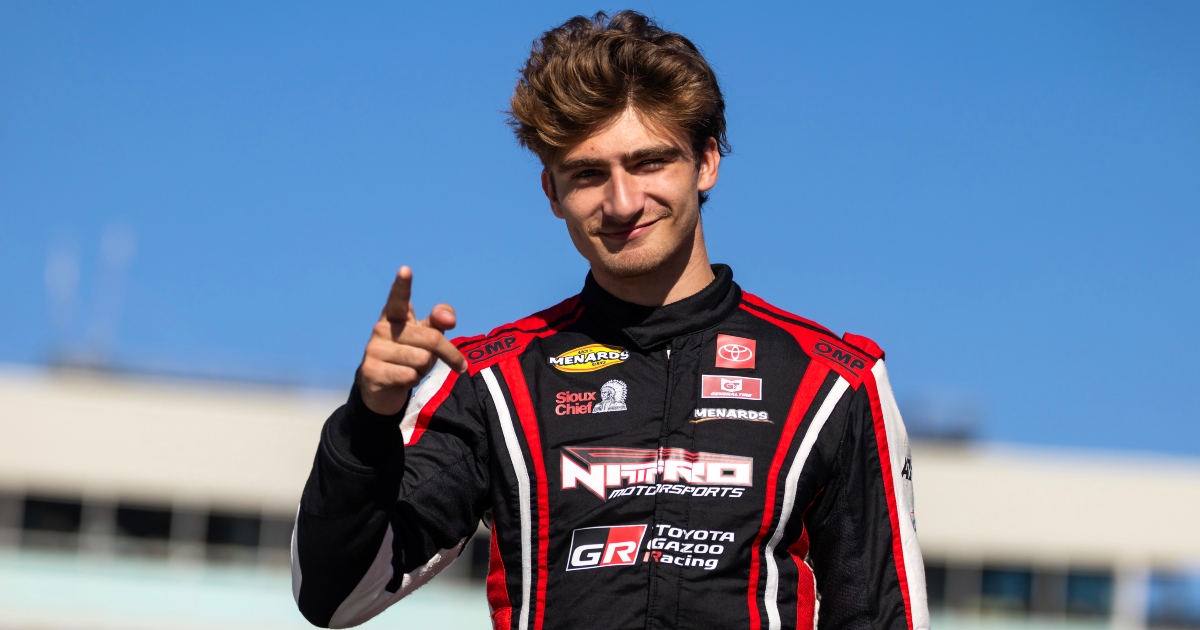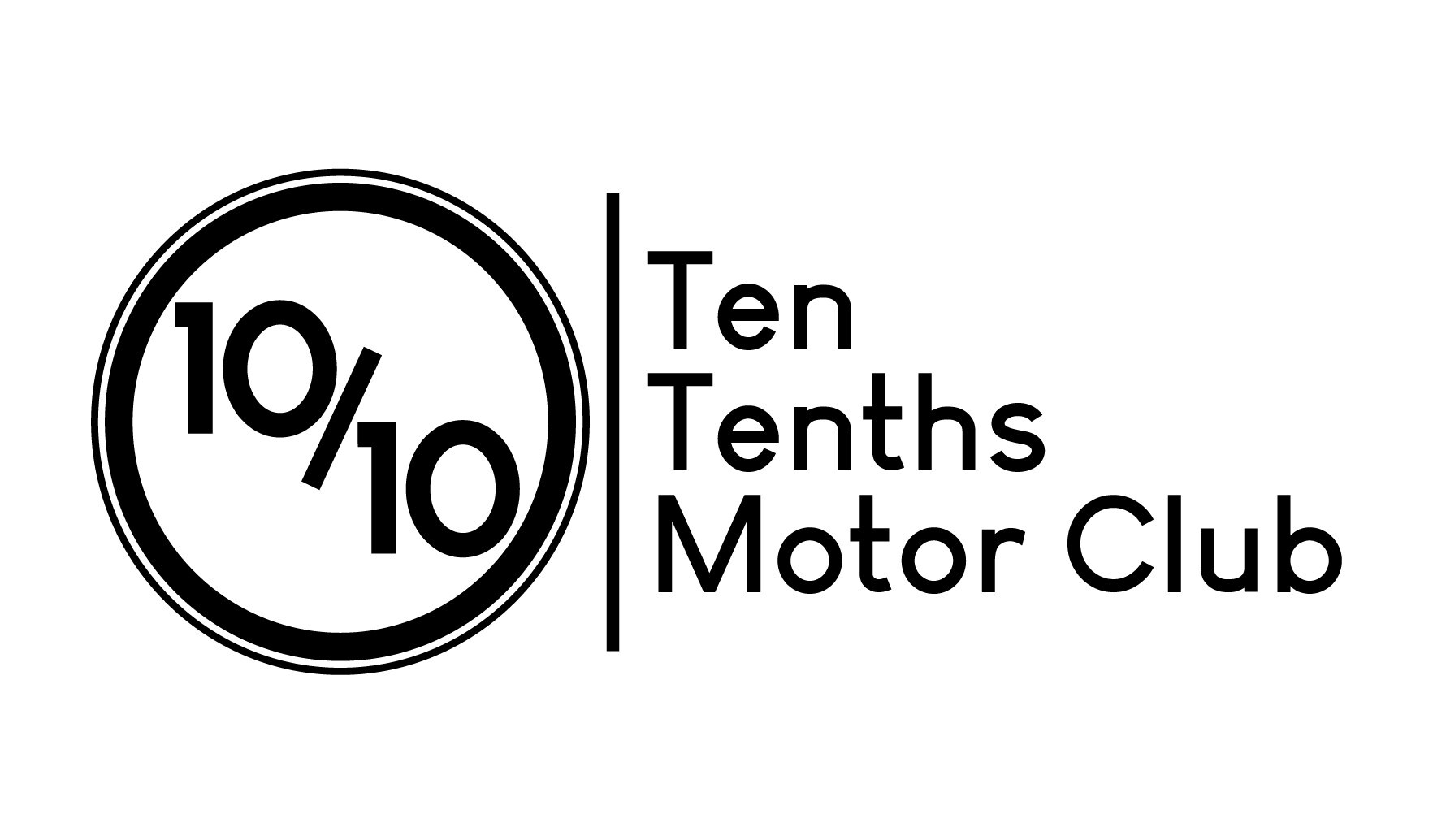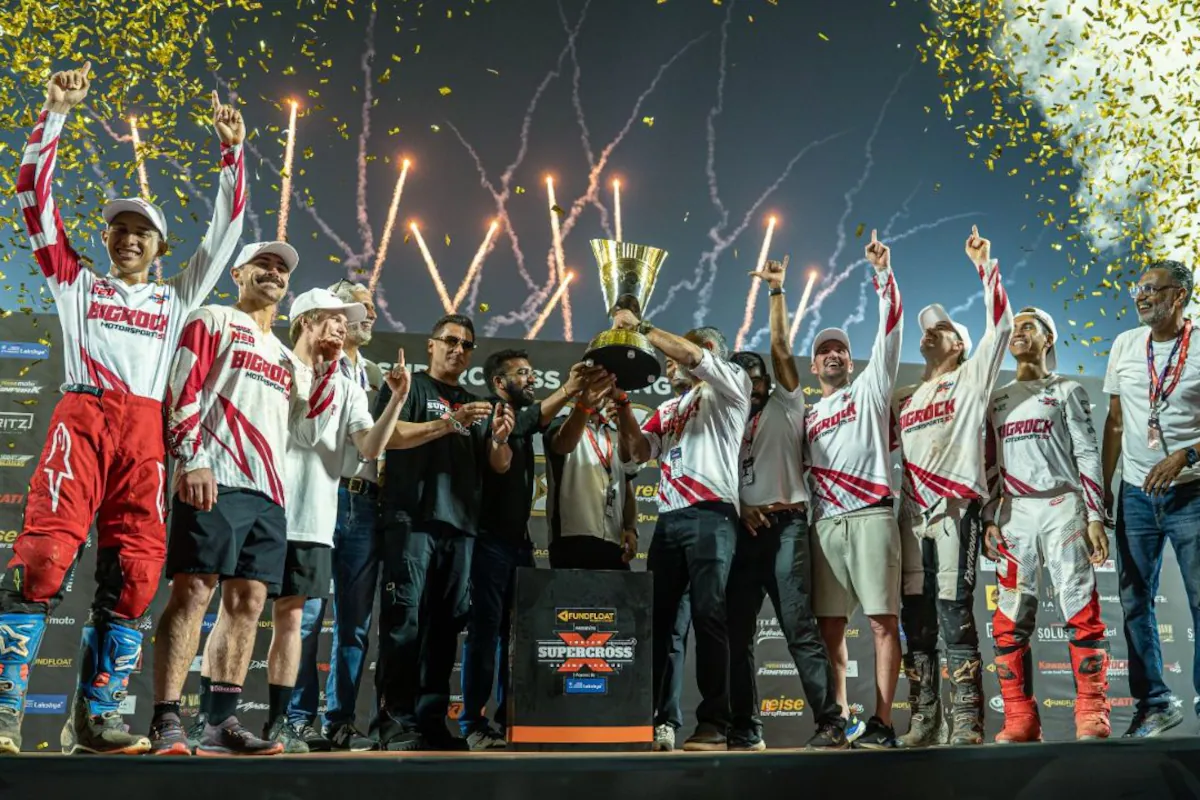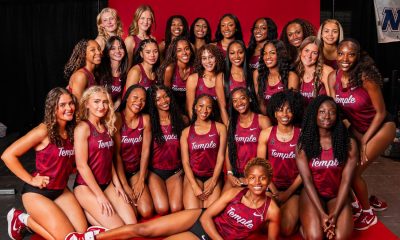Motorsports
NASCAR RECAP: Logano wins at Texas


Joey Logano won the Wurth 400 at the Texas Motor Speedway on Sunday afternoon in Fort Worth, Texas. The win is the first of the season for the multi-time Cup Series Champion.
Carson Hocevar started on the pole for the first time in his NASCAR career. He led the first 21 laps, cruising until the first caution. At that point, differing strategies came into play. With tire wear seemingly not much of a factor, some teams opted not to take four tires.
Those strategies allowed Austin Cindric to take the lead, and he would keep it for the majority of Stage One. While passing was difficult for most of the field, the #45 of Tyler Reddick was able to make up some ground. Reddick picked his way through the top five as the stage neared an end. However, Denny Hamlin’s #11 blew up with five laps to go in the stage, causing a caution right before Reddick could get past Cindric. Cindric’s #2 car won the first stage.
To start Stage Two, Josh Berry’s #21 got the lead due to taking two tires. He held it through the first portion of the stage, but then disaster struck. Berry spun unprovoked as he was trying to pass lapped traffic. He brought out the caution, deeming green-flag pit stops unnecessary.
Kyle Larson was the beneficiary of that exchange, as he quickly took the lead after the next restart. He was able to maintain that lead through the end, holding off Reddick. The third-place runner for that stretch, Chris Buescher, blew a tire with just a few laps left in the stage, ending his race-winning chances.
Larson remained ahead into the final stage, and kept that lead through multiple cautions. Kyle Busch spun with less than 40 laps to go, setting up a run to the finish.
Michael McDowell gained the lead after the restart, and looked poised to score a surprise victory. However, he was overtaken by Joey Logano with three laps to go and then wrecked. That set up an overtime finish.
On the final restart of overtime, Logano held off Blaney and Ross Chastain to win the race.
Motorsports
Thomas Annunziata signs ARCA Menards Series deal with Nitro Motorsports

A full-time season for Thomas Annunziata in the ARCA Menards Series. Nitro Motorsports signs another young star. Annunziata has a few starts in the NASCAR ranks at this point. The 20-year-old is embarking on his first full-time season in a stock car.
From New Jersey, Thomas Annunziata has been slowly getting his footing in the NASCAR ranks. He ran part-time for Cope Family Racing this season in the Xfinity Series. He had his best finish of P17 at the Chicago Street Course.
Annunziata has experience in Trans AM, ARCA, and NASCAR. Is he a championship contender in the ARCA Menards Series this season?
Thomas Annunziata has a large following on social media. He is also a winner at the ARCA level already, taking the victory at Lime Rock Park earlier this year. Annunziata earned that win with Nitro Motorsports. The young driver also earned a P5 finish at Bristol. All five of his ARCA starts this year, in the national series and East and West, were top-five finishes in 2025.
It is clear that Annunziata is a talent on the road courses. That is where he typically shines. However, he managed a pair of P20 finishes on ovals in the O’Reilly Auto Parts Series this year. Nashville and Gateway were his best oval tracks, by far. Four DNFs hampered other finishes on the season.
A full-time season will be good for Annunziata and his development. He adds a little bit of experience to a very young Nitro lineup in 2026.
Thomas Annunziata could be ARCA favorite for 2026
When you look at the current lineup for the 2026 ARCA Menards Series season, Thomas Annunziata stands out as a championship favorite. In my mind, he could be the favorite now. He has raced in nine events across the ARCA platform, and his worst finish is P12 at Talladega. His next worst finish is P7 at Watkins Glen.
Annunziata has competed against very talented racers in the last two seasons. The road course races in the ARCA Menards Series have been very competitive since Connor Zilisch stopped racing in the series. Jokes aside, he’s gone toe-to-toe with William Sawalich, Brent Crews, Connor Mosack, and others who find themselves higher up in the NASCAR ranks currently.
A strong season with multiple wins, including ovals, would do so much for Thomas Annunziata and his development. If he is able to at least contend for the championship late into the season, a Truck or O’Reilly Series team is going to come calling for 2027.
Motorsports
Kaulig CEO knows new NASCAR playoff format and predicts reactions – Motorsport – Sports

With less than two months to go until the 2026 NASCAR Cup Series season kicks off at Daytona International Speedway, the Playoff format remains a mystery.
NASCAR President Steve O’Donnell had previously admitted that change was incoming after endless criticism of the 10-race format, which culminated in a winner-takes-all finale.
However, beside the TV broadcast schedule revealing that the final 10 races will remain playoff-related, exactly what format they’ll ultimately form has yet to be revealed, although Kaulig Racing boss Chris Rice is confident fans will be happy with the end result.
Speaking on ‘The Kenny Wallace Show,’ Rice admitted any announcements regarding the Playoffs “got put on a back burner.” This is presumably down to the recent tragic death of legend Greg Biffle and his family in a plane crash in North Carolina.
The cause of the crash remains under investigation; however, NTSB Investigator-In-Charge Dan Baker explained in a press conference on Friday that Biffle’s Cessna 550 Citation, built in 1981, took off at around 10:05 am EST from Runway 28, turning left and flying for around five minutes before making a U-turn.
Sign up to our NASCAR newsletter here.
“The initial point of impact was a runway light stanchion located about 1,800 feet from the runway threshold,” Baker said. “The airplane subsequently impacted trees, two other runway light stanchions, and the airport perimeter fence short of the runway threshold before coming to rest near the runway threshold. The airplane also came to rest oriented on an easterly heading.
“Post-impact fire consumed the majority of the fuselage and the inboard wing sections. All four corners of the airplane and flight control surfaces have been identified in the wreckage and the debris field. Both engines were present with the main wreckage.”
With the NASCAR world in mourning, any discussions regarding the upcoming season have recently been put on hold. However, with the clock ticking, and the non-points-scoring Cook Out Clash at Bowman Gray Stadium scheduled for February 1, the topic of the Playoffs was bound to return soon.
Rice told Wallace that he’s confident, “You’re gonna like [the format]. You will like it.”
“It’s not exactly what everybody’s posting about. They hadn’t made a final decision the last time I was involved,” he explained. “We need an adjustment. Do we need an overhaul? No. But we need an adjustment.
“I enjoy going back to Homestead. But we don’t need one race to make the difference. We know going to Homestead, if Kyle Larson’s in the final four, who the heck you think’s gonna win? Yeah. If Tyler Reddick’s in the final four, who the heck you think’s gonna have a shot? Come on. So they recognize that.
“The fans have been vocal. ‘Kenny Wallace is a big, big advocate of this. I’ve watched so many times. Kenny, change the direction of the lawsuit by saying X.’ And I’m like, geez, that’s good. We’ve listened as a sport. And it’s gonna be great.
“What I do know is I feel like 75 percent of the people are gonna love it. 10 percent are gonna be, ‘Ah, okay,’ right? And that’s gonna leave [five percent] of the people that’s gonna hate it.”
Despite this, Rice insisted that change was necessary, citing his belief that the sport risked alienating its younger audience if it went back to the pre-Playoff full 36-race championship.
“So with that being said, the traditional way of doing points would be tough to do in this era. Because we are looking towards a younger group of people, right?” he said.
“So that’s what we got to think about. Me and you, man, I’ll go back and watch them old races on Tubi. And like, dude, it might be one car in the lead lap. And somebody’s winning the point series by 487 points. Like, I mean, that ain’t exciting to the young guy or the young woman.
“So we got to make it exciting. And our attention spans, my social media guy says, ‘Remember, Chris, 30 seconds long, not four hours. 30 seconds.’”
Motorsports
UniFirst Corporation: Seeking New Paths?

Unifirst Corporation’s stocks have been trading up by 16.23 percent after unveiling robust third-quarter financial results.
-
Engine Capital owns about 3.2% of UniFirst’s shares and has been pressing for a ‘value-maximizing sale’, hoping to better align company management with shareholder interests.
-
Recently, there has been significant support for Engine Capital’s nominees at the UniFirst annual meeting, signaling increasing dissatisfaction with current leadership.
-
The re-election of critical board members, like Steven S. Sintros and Joseph M. Nowicki, indicates both stability and shareholder support, although pressures for strategy reevaluation remain high from some investors.
-
UniFirst’s involvement in the 2026 NASCAR Cup Series, backing Chase Elliott and the No. 9 team, might help in enhancing public engagement and brand visibility.

Live Update At 17:04:15 EST: On Monday, December 22, 2025 Unifirst Corporation stock [NYSE: UNF] is trending up by 16.23%! Discover the key drivers behind this movement as well as our expert analysis in the detailed breakdown below.
Quick Overview of Financials and Performance
When it comes to successful trading, discipline and timing are crucial. Traders are often tempted to rush into positions, driven by emotion rather than strategy. However, it’s essential to remember what seasoned professionals advocate. As millionaire penny stock trader and teacher Tim Sykes, says, “Be patient, don’t force trades, and let the perfect setups come to you.” This philosophy encourages traders to wait for ideal conditions rather than forcing positions in the market, emphasizing the importance of strategy and timing over impulsive decisions.
Despite the tumultuous governance environment, UniFirst is not standing still. Recent market numbers show a stock value bounce up and down, indicating high volatility. For instance, on Dec 25, 2025, the stock opened at $213.22 and closed at $197.64, after a rollercoaster of a day. Such fluctuations often suggest uncertainty among investors about future company performance. Intraday, the stock saw highs of over $218 and lows near $191, reflecting market volatility.
Financial reports show UniFirst’s management is cautiously navigating a challenging economic landscape. The recent earnings report highlighted an increase in operational revenue totaling $614.45M for the quarter, alongside significant operating expenses. Yet, the company maintained a healthy gross profit margin, showcasing the viable nature of their core business.
Growth metrics show UniFirst boasts a profitability edge. With an EBIT margin of 7.6% and gross margins near 36.6%, their financial health seems sound. Key ratios, like a low total debt-to-equity ratio of 0.03, suggest a leveraging strategy built for resilience rather than risk, critical in these times.
What’s interesting is how certain catalysts seem to be missing in propelling UniFirst’s stock. Poor strategic decisions are cited by some shareholders, costing millions in value loss. This sentiment is shared across various articles, echoing a louder call for potential systemic changes.
Influence of News on UniFirst’s Stock
The narrative around UniFirst is increasingly drawing attention, not because of groundbreaking innovations but due to internal governance dynamics and market presence decisions, like the NASCAR campaign. How does this impact numbers on a quarterly basis? The financials indicate a consistent revenue inflow, with a quarterly total of over $614M in operating revenue, keeping the business afloat. Yet, many believe a revamp of tactics might unlock further potential swiftly.
UniFirst’s profits, though steady, seem parked on a plateau. Shareholder calls for action reverberate among investors like Engine Capital, focusing attention on the need for strategic direction realignments. Pushing for a bold sales strategy might initiate a ripple effect, impacting stock perception across markets.
The willingness to embark on high-profile sponsorship ventures targets increased brand recognition, painting an optimistic picture about future revenue channels. Still, some concerns loom. With a current ratio of 3.2, UniFirst holds liquidity strength, allowing it to safely navigate immediate liabilities while investing in ventures like the NASCAR sponsorship.
More Breaking News
As the tug-of-war continues between those advocating change and those reinforcing current trajectories, the stock market keeps observing, waiting and speculating. Investors, thus, are glued to any developments relevant to management decisions.
The Demand for Strategic Reforms: Unchartered Waters
From what can be seen across the media lynchpins, UniFirst’s situation draws a fascinating question mark. Will they evolve under pressure?
While their primary sponsorship of a competitive NASCAR team captures attention, innovations surrounding core business offerings remain under review by many. Investors and analysts are showing a penchant for companies prioritizing adaptive strategies instead of stagnant operations.
This innovative push is threading into the corporate ethos of shareholder activists focused on constructive adaptations, party to using available avenues for reaching success.
Meanwhile, Engine Capital voices an opinion, making clear that underlying value destruction cannot carry on. A strategic shake-up, many argue, would unshackle hidden prospects for UniFirst.
In essence, the story continues to play out—a beautifully tangled narrative of investor aspirations, management ethos, and market realities. Stakeholders watch, strategize, and wait for the next chapter in UniFirst’s evolution. The outcome, however, lies between the call for innovation and steering current paths through calm and storm alike.
Conclusion: Harnessing Potential in an Evolving Landscape
The current trader atmosphere surrounding UniFirst is one of anxious anticipation entwined with belief. As millionaire penny stock trader and teacher Tim Sykes, says, “Preparation plus patience leads to big profits.” How these strategies unfold is central to whether UniFirst continues on its present course or veers towards innovative terrains, maximizing shareholder value. As uncertainty mingles with hope, this story, one of corporate intrigue, represents a crossroads for a company craving directional clarity. The coming days could bring profound changes to the narrative unfolding within UniFirst’s financial odysseys. Where it heads will have ramifications for more than just its shareholders—indeed, the industry observes a piece of history in the making.
This is stock news, not investment advice. Timothy Sykes News delivers real-time stock market news focused on key catalysts driving short-term price movements. Our content is tailored for active traders and investors seeking to capitalize on rapid price fluctuations, particularly in volatile sectors like penny stocks. Readers come to us for detailed coverage on earnings reports, mergers, FDA approvals, new contracts, and unusual trading volumes that can trigger significant short-term price action. Some users utilize our news to explain sudden stock movements, while others rely on it for diligent research into potential investment opportunities.
Dive deeper into the world of trading with Timothy Sykes, renowned for his expertise in penny stocks. Explore his top picks and discover the strategies that have propelled him to success with these articles:
Once you’ve got some stocks on watch, elevate your trading game with StocksToTrade the ultimate platform for traders. With specialized tools for swing and day trading, StocksToTrade will guide you through the market’s twists and turns.
Dig into StocksToTrade’s watchlists here:
Motorsports
Veteran Automotive Executive Andy Thomas Named Vice President of Manufacturer Relations At Ten Tenths Motor Club

CONCORD, N.C., Dec. 22, 2025 /PRNewswire/ — Ten Tenths Motor Club has named longtime automotive executive Andy Thomas as its new Vice President of Manufacturer Relations, bringing more than three decades of global experience in luxury automotive sales, marketing and brand management to the newly opened motorsports and lifestyle destination.

In his new role, Thomas will develop and maintain relationships with OEM partners to understand their needs, perspectives and objectives, while working to identify opportunities for growth by leveraging new and existing partnerships to increase facility usage.
Click here for photos to support this release.
Thomas joins Ten Tenths Motor Club after serving as Vice President of Marketing and Communications for McLaren Automotive North Americasince 2015, where he led strategic marketing, communications and global strategy that helped drive record sales growth. During his decade with McLaren, Thomas oversaw experiential events in over 30 major metro markets and developed retail programs that significantly increased sales conversions and owner engagement.
“Andy’s reputation and relationships within the global automotive community are unmatched,” said Rick Hendrick, who founded Ten Tenths Motor Club in partnership with Speedway Motorsports. “His leadership will be instrumental in strengthening our partnerships with manufacturers and luxury brands as we continue to establish Ten Tenths as a world-class venue for automotive experiences.”
Prior to McLaren, Thomas served in leadership roles with Rolls-Royce Motor Cars in both Goodwood, U.K. and North America, where he guided global brand alignment and oversaw international marketing strategy across Europe, Asia-Pacific and the Middle East. Earlier in his career, he held key marketing and sales roles with BMW of North America, Ferrari North America and Land Rover North America, gaining experience in dealer relations, product marketing and luxury customer engagement.
“Our vision for Ten Tenths Motor Club is to establish the facility as not only a premier experience for passionate automotive enthusiasts, but also to create a destination for corporate events that is unmatched in the automotive industry,” said Speedway Motorsports President and CEO Marcus Smith. “We look forward to Andy joining our efforts to invite manufacturers from around the world to Ten Tenths Motor Club and the greater Charlotte region.”
A Clemson University graduate with a Bachelor of Science in Mechanical Engineering, Thomas also serves on the Board of the Erwin Center for Brand Communication at his alma mater. In that role, he mentors students, sponsors real-world marketing projects and connects students with opportunities across the automotive and luxury brand landscape.
A native of Salisbury, Maryland, Thomas began his career in dealer operations at Fox Chevrolet in Baltimore before joining the OEM side of the industry. His work has taken him across the United States, the United Kingdom and Europe, building a broad network and a deep understanding of international brand collaboration.
“I’m thrilled to join Ten Tenths at such an exciting time,” Thomas said. “The club’s vision represents the next evolution of automotive lifestyle and performance culture. I look forward to connecting global manufacturers with this extraordinary facility and to becoming part of the Charlotte community.”
Located adjacent to the iconic Charlotte Motor Speedway, Ten Tenths Motor Club combines exclusive track access, curated events and premium hospitality to create an unparalleled environment for members and partners. The facility has quickly become a premier destination in the Charlotte metropolitan area for automotive launches, luxury brand activations, enthusiast experiences and special events. Tickets are now on sale for Ten Tenths Motor Club signature public event, Heritage Invitational, April 9-11, 2026.
About Ten Tenths Motor Club
Based in Concord, North Carolina, Ten Tenths Motor Club is a private automotive and lifestyle destination designed for those who live and breathe performance. Located beside Charlotte Motor Speedway, the club offers members access to exclusive driving experiences, signature events, and brand collaborations with the world’s most respected automotive manufacturers and luxury partners.
Learn more at www.tententhsmotorclub.com.
![]() View original content to download multimedia:https://www.prnewswire.com/news-releases/veteran-automotive-executive-andy-thomas-named-vice-president-of-manufacturer-relations-at-ten-tenths-motor-club-302648064.html
View original content to download multimedia:https://www.prnewswire.com/news-releases/veteran-automotive-executive-andy-thomas-named-vice-president-of-manufacturer-relations-at-ten-tenths-motor-club-302648064.html
SOURCE Speedway Motorsports

Motorsports
Mobil 1, Autodromo Again Partner on Limited-Edition, Auto-Inspired Watch

The Mobil 1 brand has again teamed up with Autodromo to introduce a limited-edition, automotive-inspired wristwatch—the Group B Mobil 1 Edition. After the sellout success of their first collaborative timepiece, the Monoposto Mobil 1 Edition, the companies return with a new design crafted for motorsports enthusiasts.
Inspired by the Group B rally era, a short-yet-iconic period from 1982-86, the watch draws from a chapter widely regarded as one of motorsports’ most thrilling, according to officials. Group B combined fearless driving with advanced materials and bold engineering, producing the kind of speed and spectacle that helped define modern performance culture. Drivers charged across mountain passes, desert roads and snowy forest stages in machines that continue to shape the way fans view the sport today.
Autodromo’s interpretation of this era blends that history with modern craftsmanship. The Mobil 1 Group B Pegasus Edition features a bimetallic case construction with a lightweight 39mm titanium capsule housed within a stainless steel outer structure. Designed with a unisex fit, the watch offers a versatile wear experience for collectors and fans alike.

The integrated stainless-steel bracelet is finished with a black DLC coating for a sharp, contemporary look, and a high-contrast dial inspired by vintage racing tachometers reinforces the motorsports influence. Each piece arrives in a handcrafted aluminum box, and the bracelet can be easily removed with a spring bar tool for those who prefer to swap in a strap.
Blending Innovation & Passion
Only 70 watches will be available at Autodromo.com (retail value: $995).
“Group B represents a moment in motorsports where innovation and passion were at their highest. It still inspires so much of what the Mobil 1 brand stands for,” says Austin Johansen, North America marketing manager on behalf of the Mobil 1 team. “We loved seeing the response to our first watch, and we are excited to bring fans a second collaboration that celebrates both performance and lifestyle.”
For Autodromo, the Group B silhouette is one of the brand’s most iconic designs, known for its slim profile, precision and early-1980s high-tech aesthetic.
“The Mobil 1 brand sits at the heart of automotive culture, so this collaboration continues to feel purposeful and exciting for us,” says Bradley Price, founder of Autodromo. “This edition is a chance to honor an unforgettable motorsports era and create something that feels fresh, collectible and full of character.”
Key features include:
- Bimetallic titanium and stainless steel case
- Stainless steel integrated bracelet with hidden butterfly clasp and black DLC coating
- Miyota 9015 automatic movement
- Sapphire crystal with antireflective coating
- Water resistant to 50 meters
- 39mm case diameter
- 9mm case thickness
- 75 mm lug to lug
- 20 mm lug width
- Packaged in a handcrafted aluminum collector’s box
Motorsports
Bigrock Motorsports Crowned Indian Supercross Racing League Season 2 Champions

The Indian Supercross Racing League (ISRL) Season 2 concluded spectacularly with a historic Grand Finale at the EMS Corporation Stadium, Calicut. Megastar and ISRL Brand Ambassador Salman Khan was present on the ground, adding star power to an electrifying night of high-octane racing and live entertainment.
The finale witnessed a record-breaking turnout of over 32,000 fans, marking the highest-ever attendance for a motorsport event in India and reinforcing Kerala’s strong connection with motorsport and large-scale live sporting experiences.
Indian Supercross Racing League Season 2
Amid roaring crowds and intense on-track action, Team Bigrock Motorsports was crowned ISRL Season 2 Champions, capping off a fiercely competitive championship that unfolded across Pune, Hyderabad, and Calicut. The season showcased a compelling blend of international excellence and emerging Indian talent.
Also Read: Tesla Model Y’s HEPA Filter Can Filter Out 99.97 Pc Of Pollutants: Watch Video
The Calicut round delivered thrilling racing across all categories. Matt Moss from team BigRock Motorsports (Australia) claimed victory in the 450cc International class aboard the Kawasaki KX 450, while Calvin Fonvieille from team Apollo Indewheelers (France) dominated the 250cc International category on the Yamaha YZ 250. The 250cc India-Asia Mix class was won by Delvinator Alfarizi (Thailand) riding the KTM 250 SX – F, drawing thunderous applause from the packed stadium.
Indian Supercross Racing League Season 2 Result
Megastar Salman Khan, Brand Ambassador, ISRL, said: “Watching the Grand Finale in Calicut was truly special. The passion of the fans and the intensity of competition show how far Indian motorsport has come. ISRL is creating a platform where Indian riders can compete confidently alongside the world’s best.”
Also Read: Nissan Previews New Nismo Concept Ahead Of Tokyo Auto Salon 2026 Debut
Reflecting on the season, Veer Patel, Managing Director, ISRL, said: “Season 2 reflects the growing belief in Supercross across India. From Pune to Hyderabad and now Calicut, the record-breaking fan response shows the sport has truly found a home here, while we continue building strong pathways for Indian riders alongside world-class racing.”
Over the course of Season 2, 36 international riders from 21 countries, including Australia, France, the USA, Germany, Thailand, and South Africa, competed alongside India’s top riders such as Rugved Barguje, Ikshan Shanbhag, Prajwal Vishwanath, and Shlok Ghorpade, highlighting ISRL’s growing global stature.
Beyond the races, the Reise Moto ISRL Fan Park transformed EMS Corporation Stadium into a complete motorsport festival, featuring live music, racing simulators, interactive brand zones, food experiences, merchandise, and rider interactions, creating an immersive fan experience for families and enthusiasts alike.
Also Read: Tata Sierra EV Snapped Testing In India; Here’s What We Know So Far
With Season 2 concluding on a historic high, the Indian Supercross Racing League now looks ahead to expanding its footprint, strengthening grassroots development, and further positioning India on the global Supercross map.
-

 Motorsports2 weeks ago
Motorsports2 weeks agoSoundGear Named Entitlement Sponsor of Spears CARS Tour Southwest Opener
-

 Rec Sports3 weeks ago
Rec Sports3 weeks agoBlack Bear Revises Recording Policies After Rulebook Language Surfaces via Lever
-

 Motorsports2 weeks ago
Motorsports2 weeks agoDonny Schatz finds new home for 2026, inks full-time deal with CJB Motorsports – InForum
-

 Rec Sports2 weeks ago
Rec Sports2 weeks agoHow Donald Trump became FIFA’s ‘soccer president’ long before World Cup draw
-

 Rec Sports2 weeks ago
Rec Sports2 weeks agoDavid Blitzer, Harris Blitzer Sports & Entertainment
-

 Motorsports2 weeks ago
Motorsports2 weeks agoJR Motorsports Confirms Death Of NASCAR Veteran Michael Annett At Age 39
-
Sports2 weeks ago
Elliot and Thuotte Highlight Men’s Indoor Track and Field Season Opener
-
Sports2 weeks ago
West Fargo volleyball coach Kelsey Titus resigns after four seasons – InForum
-

 Motorsports2 weeks ago
Motorsports2 weeks agoRick Ware Racing switching to Chevrolet for 2026
-

 Sports2 weeks ago
Sports2 weeks agoTemple Begins Indoor Track & Field Season at UPenn This Weekend


































